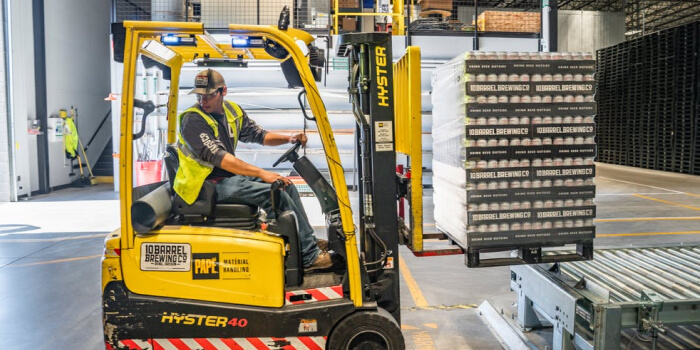To purchase equipment is one of the most common reasons why small businesses seek financing. Being able to afford the equipment on your own would be great. But, that is not the case for many small businesses. These small businesses have to choose between financing and leasing it. Let’s look at the two in detail and how you can determine what’s right for your business.
What is Equipment Financing?
Under this agreement, the lender will pay the price of the equipment required by your small business. Depending on the nature and cost of the equipment under consideration, the lender can finance the purchase in whole or in part. You will then pay the installment plus interest over a period of time at the end of which you’ll fully own it. The loan is typically secured using the equipment itself – meaning that under any circumstances where you can no longer afford the loan, the lender can collect the equipment.
Pros:
- They are easier to qualify for than term loans, and lenders might consider business owners with bad credit
- No additional collateral is needed as these loans are self-secure
- The interest rates charged can range from as low as 8% to as high as 30%.
- Equipment loans are tax-deductible
- It help maintain working capital for other purposes
Cons:
- You cannot deduct the full cost of the equipment if it needs to be depreciated
- The equipment might be outdated by the time the loan is repaid
- A down payment might be required as most lenders often supply only around 80% of the cost of equipment
What is Equipment Leasing?
This is a contractual agreement in which the owner of the equipment (lessor) permits the lessee to use the equipment for a limited period of time. There are two types of equipment leasing – operating leases and long-term leases. The lessee pays the lessor periodically. However, unlike equipment financing, the ownership remains with the lessor and is not transferable at the end of the period. The lessor can also cancel the lease agreement if the equipment is being used for illegal activities or goes against the terms of the agreement.
Pros:
- Less initial expense as no down payment or additional collateral are needed
- The application process is relatively simple and requires less paperwork than a traditional business loan
- After the term of the lease ends, the lessee can choose to (i) purchase the piece of equipment (ii) continue the lease (iii) return it (iv) trade it in for new updated equipment as a new lease agreement
- Lease payments can be deducted as business payments on tax returns
- Leasing allows businesses to upgrade obsolete equipment easily
Cons:
- The overall cost (principal + interest) of leasing equipment is always higher than buying it
- The lessee doesn’t own the equipment unless it becomes obsolete at the end of the lease
- The lessee is obliged to pay for the entire lease period even if the equipment is not used
Considerations for Decision Making
Between equipment financing and leasing, choosing the wrong option can cause problems. Before making the choice between equipment financing and equipment leasing, there are a few factors that you will need to consider. Some of them are:
- The amount of time for which you need the equipment
- The current and future cash flow situation
- Technological advances in your industry
- Your creditworthiness and history
- Your ability to maintain and repair equipment
Identify what is right for your business
Equipment Leasing is a good option for small businesses that don’t have immediate cash to buy equipment or to make down payment. If the nature of operations of your business requires you to update equipment continually, leasing is the better choice. Lease agreements allow you to upgrade to new equipment. 2017’s Tax Cuts and Jobs Act include changes that make leasing equipment even more attractive for businesses. As per the IRS, lease payments are completely tax deductible without limit while interest on loans is only deductible up to 30% of earnings. If your small business is just starting, you may not want to pledge any business or personal assets as collateral. This is where leasing comes in handy as the equipment itself is the collateral.
Equipment Financing is ideal if you don’t have to upgrade equipment for a long period of time and wish to have its complete ownership. They are also recommended if your small business can make a good-sized down payment, which means that you will be charged lower interest rates.
Conclusion
Deciding between leasing and financing equipment is a serious consideration for many businesses. Both have their appeal depending on the nature of your business and requirement of equipment. Even if you choose what’s right between the two, you may need additional small business financing for purposes like making the down payment or for supplementing the loan. This is where alternative lenders like Reliant Funding can help you out.







